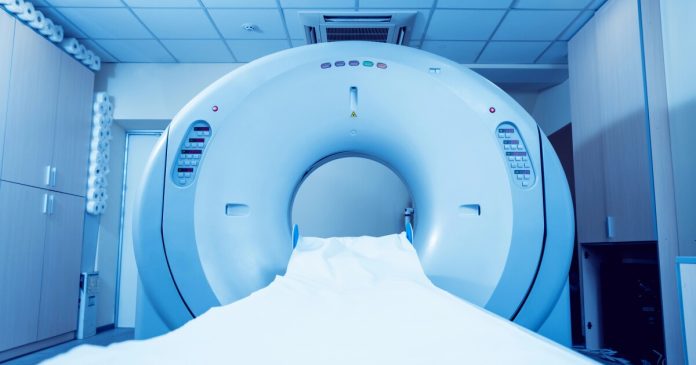A new study has set off alarm bells, attributing the overuse of computed tomography – or CT – scans to around 5% of new cancer diagnoses annually. Since 2007, this imaging technology has seen a 30% rise in use in the US.
Researchers from the University of California San Francisco (UCSF) used statistical modeling to land on their figure, estimating the prevalence of cancer that will develop in the US as a result of 93 million CT examinations. The model predicted that just over 100,000 new cancer cases would come from exposure to the CT radiation.
“CT can save lives, but its potential harms are often overlooked,” said first author Rebecca Smith-Bindman, MD, radiologist and professor of epidemiology and biostatistics and obstetrics, gynecology and reproductive sciences at UCSF. “Given the large volume of CT use in the United States, many cancers could occur in the future if current practices don’t change.
“Our estimates put CT on par with other significant risk factors, such as alcohol consumption and excess body weight,” she added. “Reducing the number of scans and reducing doses per scan would save lives.”
It is, however, critical that patients understand the risk – and know the benefit of undergoing a CT scan still far outweighs this risk.
“The authors estimate that just over 100,000 cancers are predicted to occur as a result of radiation from these CT examinations,” said Professor Stephen Duffy, from Queen Mary University of London. “This amounts to around a 0.1% increase in cancer risk over the patients lifetime per CT examination. When we consider that the lifetime risk of cancer in the general population is around 50%, the additional risk is small.”
The researchers estimate how many future cancer cases could be caused by CT radiation that patients had been exposed to in 2023. The technology itself uses ionizing radiation, and large doses have been associated with increased cancer risk. But the team is clear that their model-based estimate is not at all showing causation and no direct link between CT examinations and cancers is established. But it does highlight a concern that Americans are getting too many scans, exposing them to more radiation than necessary.
“This is a well-conducted modeling study using robust data from US hospitals and established methods for estimating cancer risk from radiation exposure,” said Doreen Lau, a lecturer at Brunel University of London, who was not involved in the research. “It provides a timely reminder that while CT scans are often life-saving and essential for diagnosis, they do come with a small but real potential risk of contributing to cancer over a lifetime, especially when used repeatedly, in younger patients, or when not clinically necessary.
“The findings don’t mean that people should avoid CT scans when recommended by a doctor,” she added. “In most cases, the benefit of detecting or ruling out serious illness far outweighs the very small risk of harm. What this research highlights is the need to minimize unnecessary imaging and use the lowest dose possible, particularly in settings where CT usage is high. Where appropriate, clinicians may also consider alternative imaging methods that do not involve ionizing radiation, such as MRI or ultrasound – especially for younger patients or when repeat imaging is anticipated.”
The study does, however, uncover a potential issue with how CT examinations are regulated in the US. Experts in the UK have weighed in, pointing to their health system’s strict control over the use of the technology – and why the US may have an over-scanning problem.
“In the UK we operate under the precepts of the Ionising Radiation (Medical Exposure) Regulations last updated in 2017, which mandates that we apply the ALARA/ALARP (As Low As Reasonably Achievable/As Low As Reasonably Practicable) principles and should opt for diagnostic imaging tests with the lowest radiation dose, or preferably an imaging test with no ionizing radiation exposure,” said Dr Giles Roditi, Consultant Cardiovascular Radiologist and Honorary Clinical Associate Professor of Radiology at the University of Glasgow. “In the UK, we also regard all requests for imaging as just that: requests that can be questioned through discussion.
“In the US, clinicians order scans and radiology departments have little room to maneuver when it comes to not performing or changing these orders, particularly since the imaging fees that accompany the scanning activity are the lifeblood of the department,” he added. “Another issue, in the US in addition to the overuse of CT mentioned in the paper, is the repeat imaging that is often performed in a fragmented healthcare system where it is easier (and more profitable) for an institution to simply repeat a scan on a patient referred in from elsewhere rather than seek out and transfer the original scans.”
And as the paper highlights, the study’s authors and external commentary agree on one thing: Efforts should be made to minimize the volume of scans when other options may be on the table – and not discourage people from getting a CT examination based on predicted risk.
“Computed Tomography scans are undertaken by highly trained radiographers and nuclear medicine technologists who have met the educational and professional standards required to ensure all CT scans are appropriately justified and optimized,” said Lynda Johnson, from the UK’s Society and College of Radiographers, who was not involved in the study. “Considering the increased use of CT as an invaluable diagnostic tool, it is imperative that the risk of harm from potential misuse, poor quality referrals, or inappropriate exposure parameters continues to be managed effectively. This is achieved by safeguarding standards of education, training and practical experience, compliance with the regulations, and applying best practice quality standards.
“Accurate communication around the benefits and risks of CT is essential to protect the public from harm,” she added. “Focusing on risk alone is not helpful and, in some cases, might prevent a person from attending a scan that could provide early diagnosis of cancer. Anyone undergoing a CT scan must be provided with balanced, accurate and relevant information to enable them to understand what it means to them as an individual in terms of their diagnosis, treatment and potential long-term care.”
Professor Richard Wakeford, Honorary Professor in Epidemiology, Centre for Occupational and Environmental Health (COEH) at the University of Manchester, added: “The level of potential risk posed by exposure to low doses of radiation should be taken into account in reaching a balanced decision on whether or not a CT scan is clinically desirable, but this judgement should not be unduly influenced by large, but uncertain, projected numbers of cancers.”
The original study was published in JAMA Internal Medicine.
Source: University of California San Francisco via Scimex




